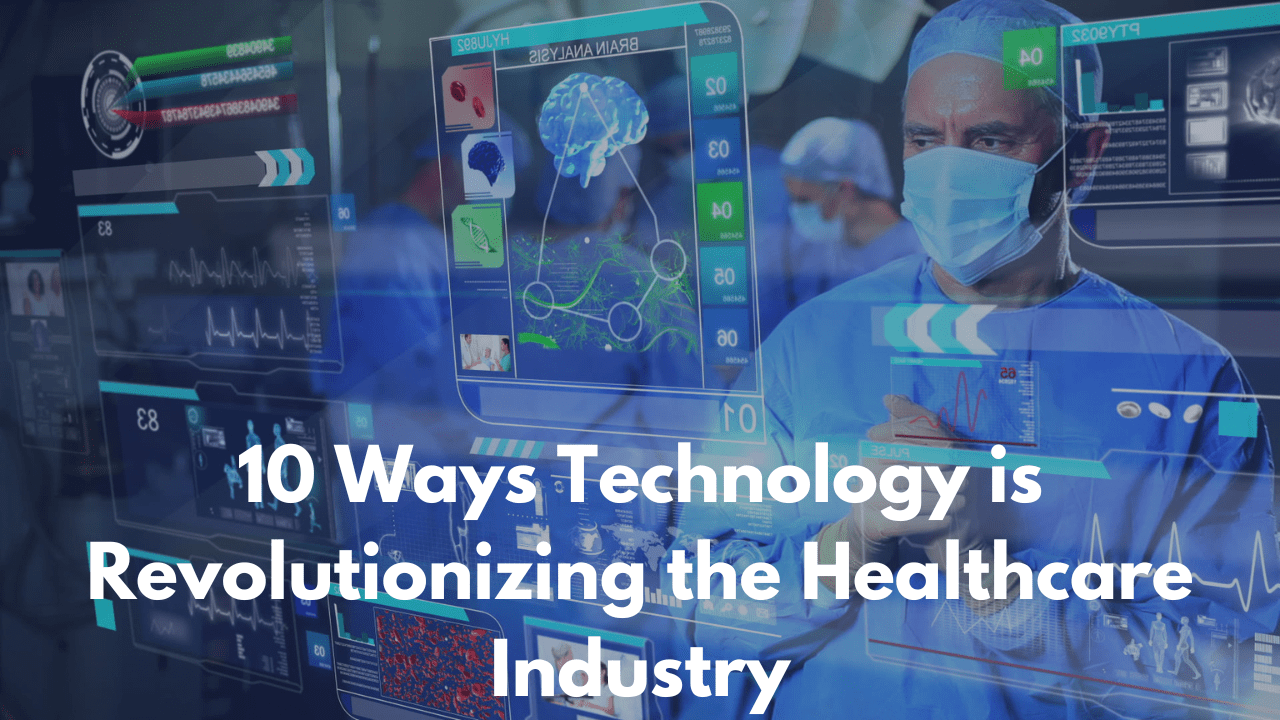This article highlights ten ways technology is revolutionizing the healthcare industry. From telemedicine to augmented reality, technology is transforming the industry by increasing accessibility and convenience for patients, improving medical record keeping, providing personalized treatment plans, and reducing costs. Wearable technology, AI, mobile applications, robotics, 3D printing, big data analytics, and AR are all playing a significant role in improving patient outcomes, reducing medical errors, and enhancing communication and collaboration among healthcare providers. These advancements highlight the importance of leveraging technology to provide better healthcare outcomes for patients and continue to shape the future of the healthcare industry.
10 Ways Technology is Revolutionizing the Healthcare Industry
1. Telemedicine
Telemedicine is the use of technology to provide clinical health care services from a distance. It eliminates the need for patients to make physical visits to hospitals or clinics, especially in rural areas where patients may have to travel long distances to access medical care. Telemedicine can include video consultations, remote monitoring, and the sharing of medical data between healthcare providers to ensure that patients receive timely and efficient healthcare.
2. Electronic Health Records (EHRs)
Electronic health records (EHRs) are digital versions of traditional paper-based medical records. They provide healthcare providers with secure, real-time access to patients’ complete health records, including medical history, medications, allergies, test results, and other critical information. EHRs make it easy for providers to share medical data, track patient progress, and identify potential health concerns before they become serious.
3. Wearable Technology
Wearable technology such as fitness trackers, smartwatches, and other medical devices can help patients monitor their health continuously. Wearables can track vital signs, blood glucose levels, heart rate, sleep patterns, and other health data, giving individuals a comprehensive view of their overall health. This data can also be shared with healthcare providers, allowing for more personalized care and treatment plans.
4. Health Information Exchange (HIE)
Health information exchange (HIE) is the sharing of medical information among healthcare providers, patients, and other stakeholders. HIE can improve the quality of care and reduce medical errors by providing healthcare providers with comprehensive, up-to-date patient records. HIE also improves patient engagement, allowing patients to access and review their medical records and help coordinate their care across different providers.
5. Artificial Intelligence (AI)
Artificial intelligence (AI) has the potential to transform the healthcare industry. AI algorithms can analyze vast amounts of medical data to identify patterns and insights that can improve patient outcomes. AI can also predict the progression of diseases, identify at-risk patients, and recommend treatment plans based on patients’ clinical history and current health status.
6. Mobile Applications
Mobile applications provide patients with convenient access to healthcare information and services. They can help users track their medications, monitor their diet and exercise habits, and access other wellness resources. Mobile applications can also simplify medical billing and provide convenient appointment scheduling and reminders.
7. Robotics
Robotics technology is changing the way surgeries are performed. Robotic surgical tools allow for minimally invasive surgeries that require smaller incisions, less blood loss, and quicker recovery times. Robotics technology can also assist healthcare providers in performing routine tasks, such as taking vitals and administering medications, freeing up time to focus on more complex patient care.
8. 3D Printing
3D printing technology is making it possible to create customized, patient-specific medical devices and implants. This technology can be used to create prosthetics, surgical implants, and even organs. 3D printing reduces the cost and waiting time for these devices and improves patient outcomes by providing a better fit and higher quality products.
9. Big Data
Big data analytics can help healthcare providers identify trends, track outbreaks, and monitor population health. Big data can be used to analyze patient data to identify high-risk patients, ensure compliance with treatment plans, and identify new treatments and therapies. Big data also allows for more accurate predictions and a more personalized approach to patient care.
10. Augmented Reality (AR)
Augmented reality (AR) technology can improve patient engagement by providing interactive, immersive experiences. AR can be used to create realistic visualizations of complex medical procedures, allowing patients to better understand their treatment options. AR can also be used to create training simulations for healthcare providers, improving the quality of care and reducing medical errors.
In conclusion, technology is revolutionizing the healthcare industry in many ways, from improving patient outcomes to reducing costs and increasing accessibility to care. The healthcare industry must continue to embrace and leverage technological advancements to provide better healthcare outcomes for patients.
